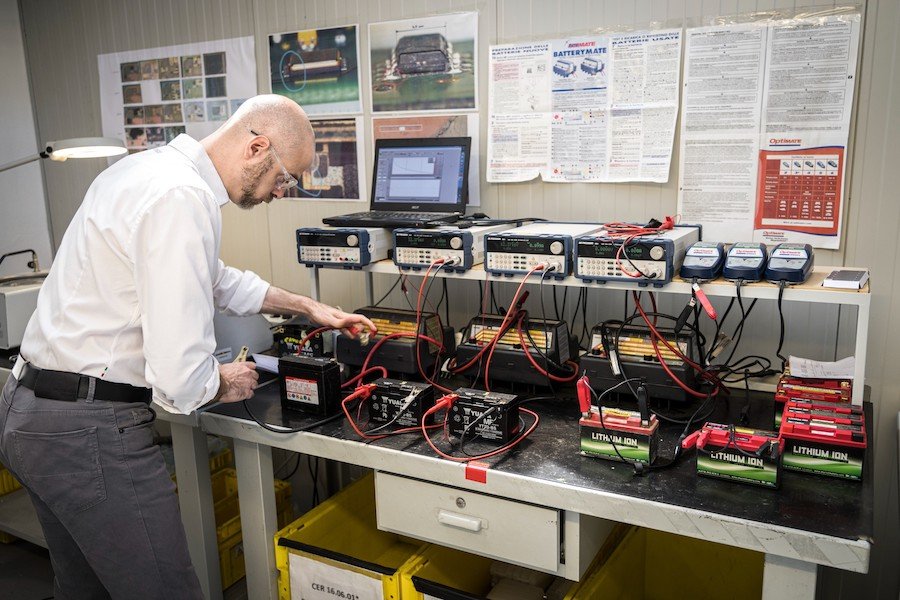"The Ducati Way" and How the Brand Changed the Motorcycle Industry for the Better

The Italian brand prides itself on having introduced many of the electronic systems that are nowadays standard on motorcycles in various. I want to share more about these technologies and how they helped the Bologna-based company get where it is today.
Ducati describes each of its products as "a magical mix between beauty and technology." The company pays great attention to detail for each motorcycle, which results in lots of research and development.
Besides the eye-catching and efficient design, electronics also play an essential role in achieving Ducati's signature performance. In the last 15 years, the brand has invested daily in the development of top-of-the-line technologies. Whether it's the track-focused capabilities of the Panigale V4 or the long-distance comfort of the Multistrada V4, the electronic solutions make it possible to refine the character and behavior of each motorbike.
As I mentioned, Ducati claims to have introduced many of the innovations we've gotten used to being part of today's standard equipment on bikes. So, let's take a closer look at them.
Ducati says it's the first motorcycle manufacturer to introduce Traction Control on a motorcycle, on the 1098R in 2008. What's more, one year later, the brand fitted an LED headlight on the Streetfighter 1100, representing another Ducati world first.
Ducati's innovations go even further than that. In 2010, the company presented the first motorcycle in the world that offers performance levels suited for each rider, the Multistrada 1200 S, which came with "Riding Modes."
The Ducati Diavel was the second cruiser motorcycle introduced by the brand – it was equipped with the TFT Display, another example of a technical solution that, in the meanwhile, has become standard in the industry. Furthermore, in 2012, the 1199 Panigale, which received the prestigious "Compasso d’Oro" design award, featured a full-LED light cluster and electronic engine brake management system, another of the brand's innovations.
Besides the performance-enhancing systems, Ducati has also created various solutions that improve the rider's safety. For instance, the brand collaborated with Dainese in 2014 to introduce the first motorcycle with an integrated system capable of communicating with the airbag in a jacket, the Multistrada 1200 Touring D|Air. Today, all Ducati motorcycles are fitted as standard with Traction Control and ABS cornering.
Of course, airbag jackets were less efficient back then than they are nowadays. However, the bike's system could send the activation signal in just 20 milliseconds in the event of an impact or a slide. Moreover, the 2020 Multistrada V4 was the first motorcycle equipped with radars, enabling the integration of the Adaptive Cruise Control and Blind Spot Detection systems.
In 2018, the Panigale V4 was upgraded with a brand-new Slide by Brake system, allowing controlled power sliding under braking. This year, Ducati introduced the extended deactivation on the Multistrada V4 Rally, a sophisticated system that can switch off the two rear cylinders to reduce fuel consumption and heat.
Ducati R&D works every day to enhance its bikes. Besides offering new technical solutions, the brand ensures its customers get the latest upgrades. For example, the Multistrada V4 owners received the Minimum Preload and Easy Lift systems free of charge when they were introduced on later models. What's more, they continue to benefit from navigation system upgrades.
The Italian brand's approach involves the internal development of technologies together with its supplier. Some examples include collaborating with Pirelli, Brembo, and Bosch. This means that Ducati has complete control over the implemented technologies and can customize them without constraints.
These innovations are also possible due to new working methods. Ducati uses several internal laboratories to conduct tests during development, eliminating the need to rely on external suppliers or resources. For instance, the Electrical & Electronic Testing lab is responsible for assuring the proper quality of the electrical and electronic components.
One of the more demanding tests carried out at this lab is the functioning of the components in extreme thermal and environmental conditions. Ducati's specialized personnel uses cells capable of replicating temperatures ranging from –40 to 180 Celsius (-40 to 356 Fahrenheit) and atmospheric events such as heavy rain or salt mist.
Robots are utilized to put great stress on the components by repeating operations thousands of times, such as the rotation of the handlebar to check the correct reliability of the wiring, simulating real conditions of use over long periods. Furthermore, Ducati goes even further and analyzes under the microscope each individual chip, verifying their exact consistency and composition.
We all know how frustrating it can be to have apps and software not work as intended. Mobile app activities and software debugging are also part of Electrical & Electronic Testing, ensuring adequate operation and connectivity.
One example of this work is for navigation systems. The Phone Mirroring solution on the Multistrada V4 allows customers to transform the dashboard into a color map navigator with all the information needed for riding the motorcycle.
The Bologna-based manufacturer describes this working methodology as the "Ducati Way," allowing the brand to consistently improve quality yearly and offer customers the bikes of their dreams.
Related News


